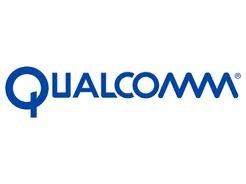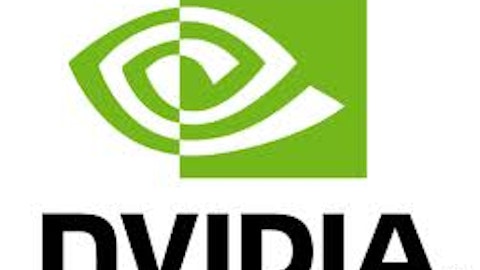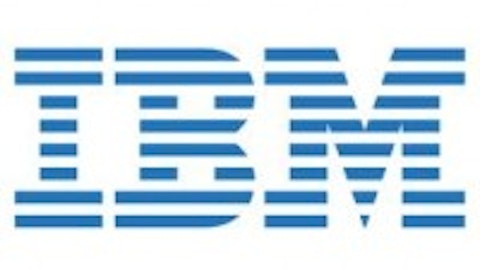The semiconductor industry continues to benefit immensely as the smartphone and tablets industries maintain their rapid growth. This growth is not as beneficial to every semiconductor company, however. QUALCOMM, Inc. (NASDAQ:QCOM), along with Advanced Micro Devices, Inc. (NYSE:AMD), have definitely benefited from the increased sales in smart phones and tablets, but not so for Intel Corporation (NASDAQ:INTC), whose main customer is the PC industry, which continues to diminish. Intel Corporation (NASDAQ:INTC) is the world’s largest chipmaker, mainly due to its massive market share in PC microprocessor chips. The company has also ventured in the business of making mobile PC microprocessor chips, as it aims to compete against QUALCOMM, Inc. (NASDAQ:QCOM) and Advanced Micro Devices, Inc. (NYSE:AMD).

Intel Corporation (NASDAQ:INTC)’s smartphone chips could disrupt the market
Intel Corporation (NASDAQ:INTC) seems set to replicate its PC processor dominance in smartphones with its new Merrifield smartphone processor. According to the company’s press release, the 4th generation Intel Core processors serve as the foundation for a wave of new 2-in-1s that combine stunning PC performance with tablet-like mobility in one device and deliver on the Ultrabook vision. The chips are expected to reach consumers by 2014.
The company also recently launched an Intel Atom processor chip code-named Bay Trail for mobile devices which is expected to boost smartphone battery life for up to nine hours of crystal-clear video streaming. It seems as though Intel Corporation (NASDAQ:INTC) is out to stamp its authority in the chip-making business, reminding QUALCOMM, Inc. (NASDAQ:QCOM), Advanced Micro Devices, Inc. (NYSE:AMD) and ARM Holdings plc (ADR) (NASDAQ:ARMH) that it is the father of processor chips.
With this kind of technology, Intel Corporation (NASDAQ:INTC) could easily change the way ARM Holdings plc (ADR) (NASDAQ:ARMH), QUALCOMM, Inc. (NASDAQ:QCOM) and Advanced Micro Devices, Inc. (NYSE:AMD) structure their chips. Soon, smartphone users will prioritize on long battery hours as the marginal rate of return on features continues to diminish. This will also put pressure on smartphone manufacturers to consider using processor chips that save battery power such as Intel’s Atom processor chip.
Intel could be staring at an opportunity for a massive growth in revenues due to sales from smartphone processor chips. This would also boost the company’s margins which otherwise remain impressive, but most importantly the company’s earnings could grow by close to a third. Before the rest of the competition catch up with the new age smartphone chips, Intel would have already established a significant share of the market which could result in sustainable earnings growth rates.
Performance
Both Intel and QUALCOMM, Inc. (NASDAQ:QCOM) reported declines in earnings for the most recent quarter year-over-year. QUALCOMM, Inc. (NASDAQ:QCOM)’s earnings were down 16.3%, while Intel’s fell by 25.3%. ARM Holdings plc (ADR) (NASDAQ:ARMH) reported 38.8% surge in earnings, however, while Advanced Micro Devices, Inc. (NYSE:AMD) remained unprofitable. In terms of gross margins, ARM Holdings plc (ADR) (NASDAQ:ARMH) is the most impressive with 94%, as compared to Intel’s 60%, and Qualcomm’s 62%. Advanced Micro Devices, Inc. (NYSE:AMD)’s gross margins are lowest at 34%. Intel’s 25% operating margin is not far off ARM Holdings plc (ADR) (NASDAQ:ARMH)’s 37%, though Qualcomm is even closer at 31%.
Nonetheless, Intel’s profitability can only be bettered by that of Qualcomm. ARM Holdings plc (ADR) (NASDAQ:ARMH)’s earnings per share (EPS) of $0.60 is well below Intel’s $2.00 and Qualcomm’s $3.56. AMD’s loss per share stands at $1.00. Note that fundamentally, AMD is the direct competitor to Intel while Qualcomm and ARM are indirect competitors. They are only competitive in various business lines such as the manufacture of mobile PC processor chips.
At the current price of $25.42 (as of June 19, at noon EDT), Intel trades at about 12.73 times its price-to earnings-ratio (P/E). The industry average is pegged at 61.99 times. The company’s estimated forward P/E for the year ending Dec. 29, 2014 is slightly below at 12.61. Its price-to-earnings growth ratio (PEG) for the next five years, which factors the projected earnings growth rate, is at 1.24 times; this is still below the industry average of 1.58.



